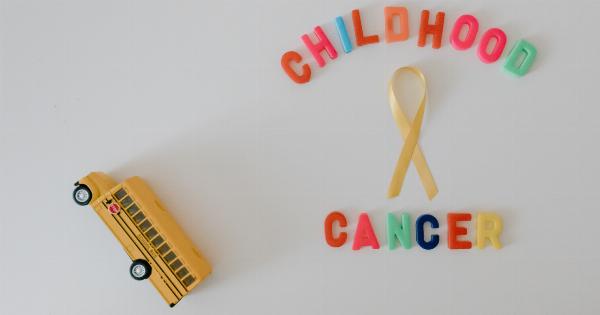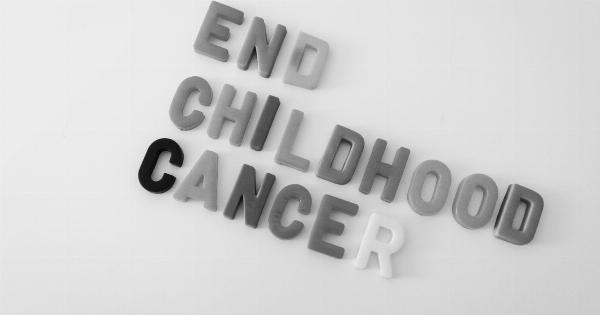Childhood cancer is a devastating disease that affects thousands of children and their families each year.
The fight against childhood cancer requires a collective effort from various stakeholders, including healthcare professionals, researchers, families, and communities. By joining forces, we can make a significant impact and improve the lives of children battling cancer. This article explores the strength in numbers when it comes to fighting childhood cancer and highlights the importance of collaboration and support.
The Impact of Childhood Cancer
Childhood cancer is a diagnosis that no family ever wants to hear. It not only affects the child but also has a profound impact on their parents, siblings, and extended family.
The physical, emotional, and financial toll of childhood cancer can be overwhelming, often leaving families feeling isolated and desperate. However, through strength in numbers, we can provide the much-needed support and resources to help these families navigate this difficult journey.
Healthcare Professionals and Researchers
Healthcare professionals and researchers play a crucial role in the fight against childhood cancer. They are at the forefront of diagnosing and treating the disease, constantly working to improve survival rates and develop more effective treatments.
Through collaboration and knowledge sharing, healthcare professionals and researchers can accelerate progress in the field of childhood cancer and offer better outcomes for patients.
Families and Support Groups
Childhood cancer can feel like an isolating experience, but families and support groups can provide a vital lifeline. Connecting with other families facing similar challenges allows for the sharing of experiences, information, and emotional support.
These connections help families feel less alone and provide a platform for education and advocacy. By coming together, families can amplify their voices and advocate for increased funding, research, and improved access to care.
Communities and Non-Profit Organizations
The support of communities and non-profit organizations is critical in the fight against childhood cancer.
These groups often organize fundraising events, awareness campaigns, and volunteer efforts to raise funds and provide assistance to affected families. Their contribution can provide financial relief, access to necessary resources, and create a sense of belonging for families.
Community involvement ensures that the fight against childhood cancer is not limited to medical professionals alone but becomes a collective effort involving society as a whole.
Government and Legislation
Government support and legislation are essential in addressing the challenges associated with childhood cancer.
By advocating for policies that prioritize childhood cancer research and funding, governments can make a significant impact on the fight against this disease. Legislative measures can promote increased access to affordable treatment, encourage early detection, and facilitate the development of innovative therapies.
Additionally, government support can lead to improved insurance coverage for childhood cancer care, eliminating the financial burden often faced by families.
Research and Innovation
Advancements in research and innovation are key to improving the outcomes for children with cancer.
Collaborative efforts between researchers, medical institutions, and pharmaceutical companies lead to the development of new treatment modalities, targeted therapies, and personalized medicine. By investing in research and innovation, we can enhance our understanding of childhood cancer and find novel approaches to treatment and prevention.
Funding and Philanthropy
Funding and philanthropy are crucial components in the fight against childhood cancer. Philanthropic organizations and individuals can contribute financially through donations, sponsorships, and fundraising events.
This funding enables researchers to pursue groundbreaking studies, healthcare facilities to provide specialized care, and families to access vital resources. With increased funding, we can accelerate progress in fighting childhood cancer and provide better support to those affected.
International Collaboration
Childhood cancer knows no borders, and international collaboration is paramount in tackling this disease. By sharing information, best practices, and research findings globally, we can avoid duplication of efforts and achieve greater efficiency.
Collaboration between healthcare professionals and researchers from different countries can lead to the development of standardized treatment protocols, improved diagnostics, and more effective therapies. International partnerships also help promote equity in access to care and ensure that no child is left behind.
Advocacy and Awareness
Advocacy and awareness play a crucial role in the fight against childhood cancer. By raising public awareness about the impact of childhood cancer, we can foster a supportive community that rallies behind affected families.
Advocacy efforts aim to influence policy changes, secure research funding, and prioritize childhood cancer as a public health issue. Through advocacy, we can spark conversations, educate society, and create a sense of urgency to address this pressing problem.
Celebrating Success Stories
While the battle against childhood cancer continues, it is important to celebrate success stories. The strength and resilience of children who have overcome cancer, and their families, inspire hope and motivate others to keep fighting.
Sharing these success stories not only raises awareness but also provides encouragement and support to those currently battling childhood cancer.
Conclusion
Childhood cancer is a formidable adversary, but through strength in numbers, we can make a difference. Collaboration between healthcare professionals, researchers, families, communities, governments, and philanthropic organizations is essential.
By pooling our resources, knowledge, and support, we can improve outcomes and create a world where no child has to face cancer alone.






















